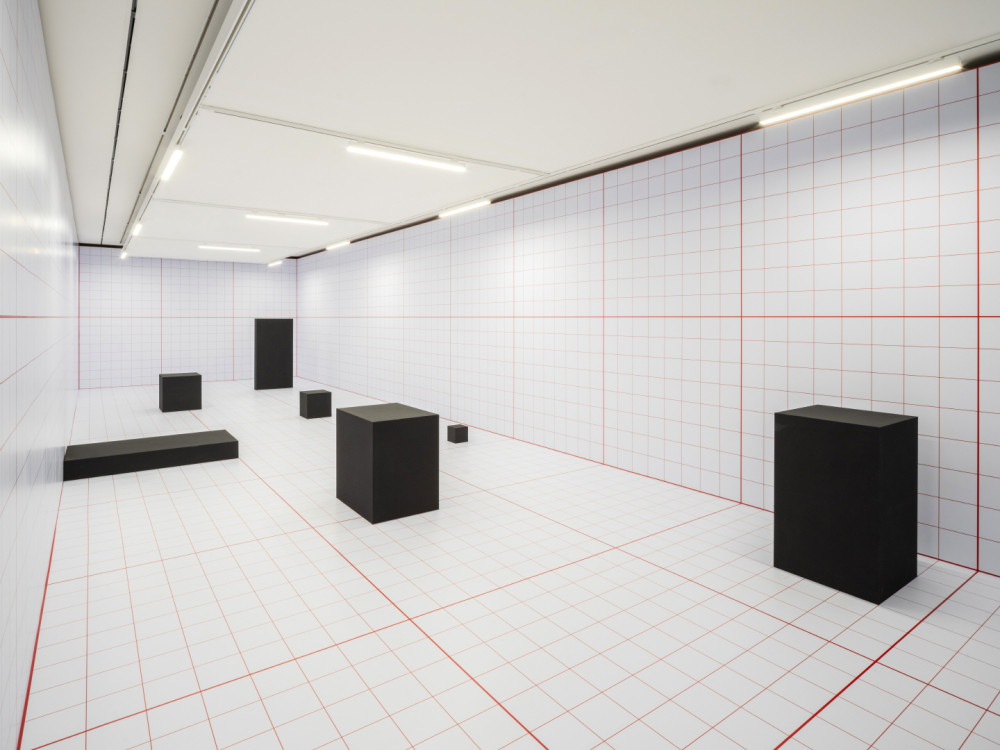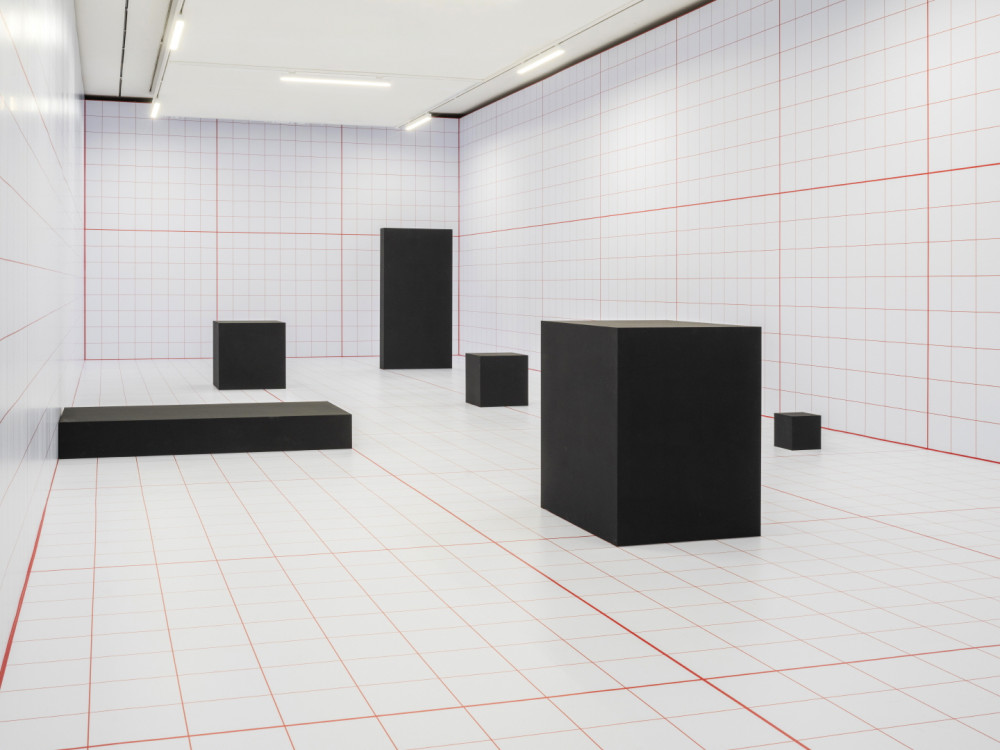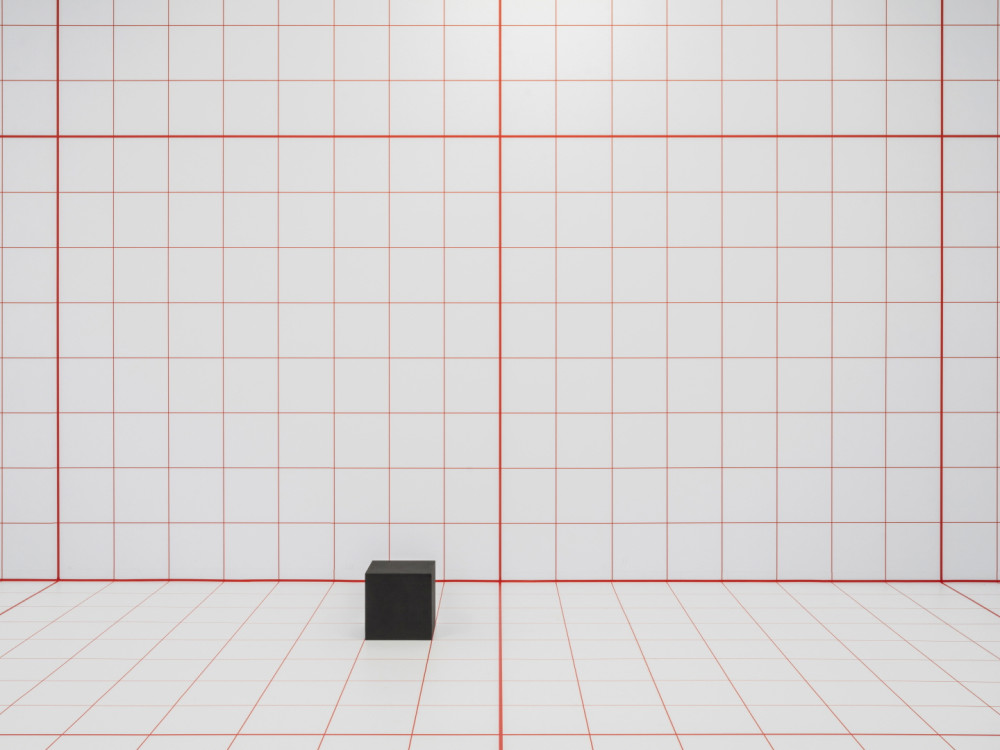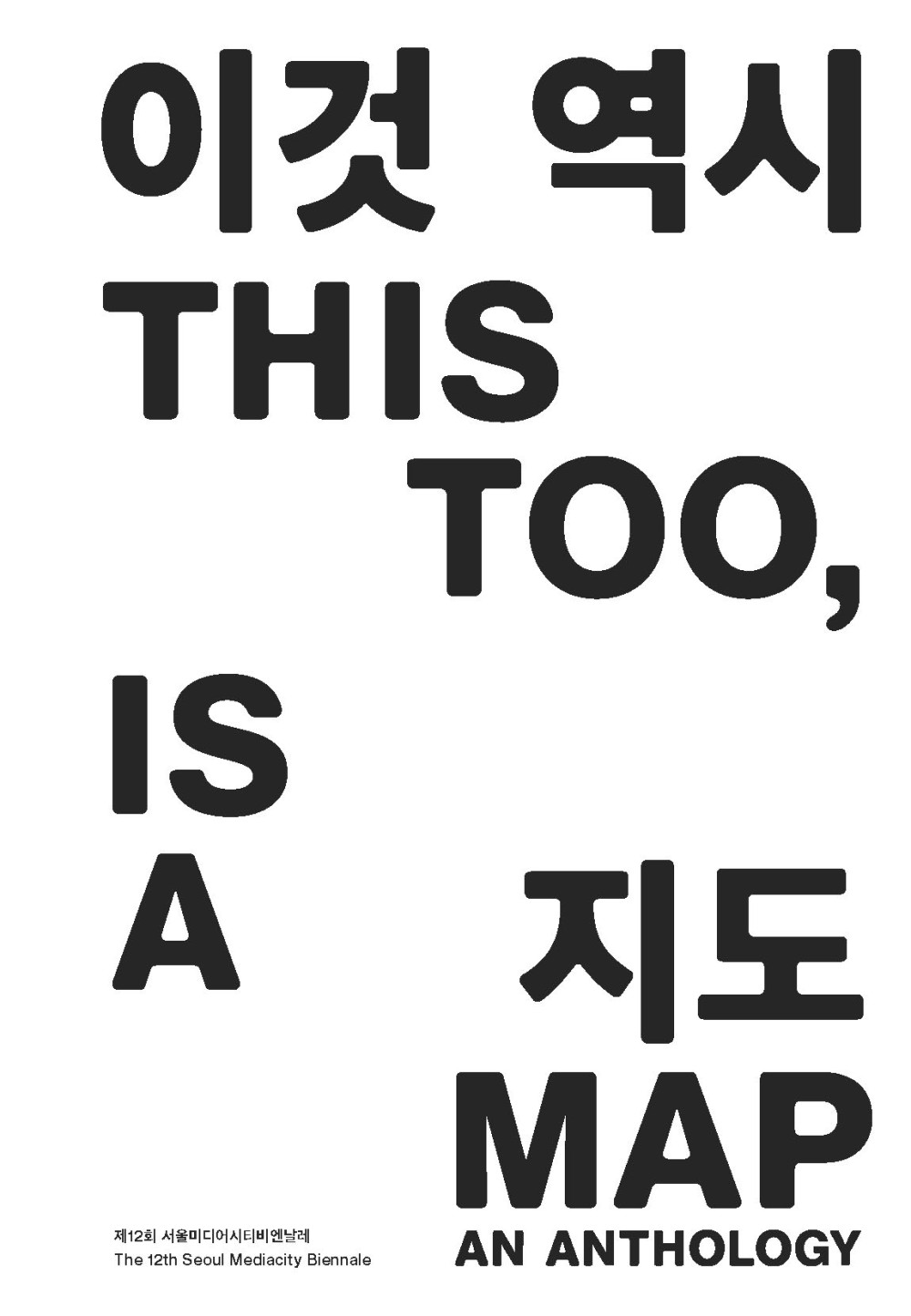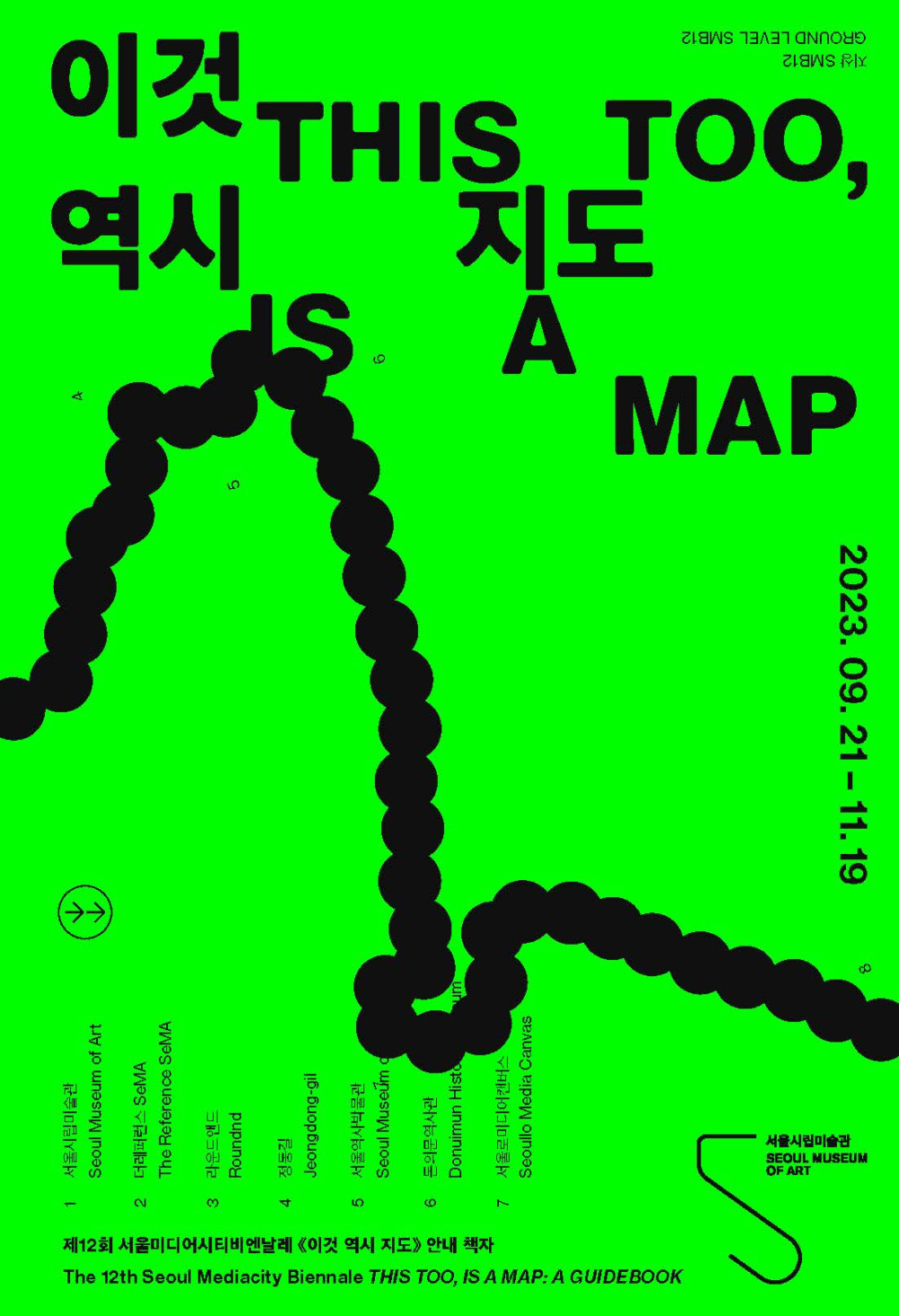
The notational and formal tendencies of Channa Horwitz’s practice stem from her earliest drawings on graph paper, which she later developed into a system called “Sonakinatography,” which derives from the words “sona”(sound) and “kina”(movement). Using this system, Horwitz produced drawings, paintings, and installations based on standardized gridsand deployed a vocabulary formulated using a set of prescribed lines, shapes, and colors. This visual language is based on the numbers one through eight, to which she assigned different colors in order to express notations of time, movement, sound, and rhythm. Such self-imposed scarcity of resources and options yielded a distinctive exploration of language without the limitations of meaning and connotation, opening up space for chance and imperfection. The immense installation Orange Grid follows the precepts of Horwitz’s Sonakinatography series and extends the planar presence of graph paper into threedimensional space.The grid subsumes the floors and walls of the exhibition space, with the work’s black ink squares becoming portable polygons that viewers are invited to manipulate and thus reshape the spacetime conditions created by the artist. By distilling language and gestures into minimal elements, the installation explores the conceptual gap between the rigidly rational space of the grid and its inverse of human friction that intervenes to alter this fixed condition.
